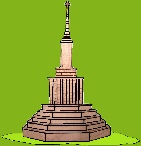
 Local Business, Food, Accommodation
History Group
Local Events
Local Business, Food, Accommodation
History Group
Local Events




 Summary of Castle Rising
Summary of Castle Rising
















Inquest of Sheriffs (1170) – William D’Aubigny II Earl of Arundel’s Manor.
‘When the earl returned from France, the men of the earl’s demesne again paid 10 marks, namely 5 marks to Richard the chamberlain (of Buckenham), and 5 marks to the Jew of Rising. Once again Richard, son of Atrac, and his fellows gave 3½ marks, namely 2 marks to Richard the chamberlain, and 20 shillings to Deulebeny the Jew.
Again, the men of the earl’s demesne paid 8½ marks, and Richard and his fellows gave 3 marks for one socage* to redeem the earl’s lands from the Jews; and this they did of their own free will. Deulebeny, the Jew of Rising, received these moneys.
These are the sums of money which the burgesses of [Castle] Rising have paid to their lord, the earl, since the king crossed overseas.
Socage is feudal tenure of land in return for agricultural or other non-
William Mercer 22s. 5d.
Wulnoth 16d.
Richard Fisher 8s.1d.
Swene Mercer 22s. 5d.
William, son of Leif 5s.
Manduerus 17s. 10d
Richard Lorimer 40d.
Hardekinus 5marks, 6s. 6d.
William Hardegrey 12d.
Richard Mercer 9s.
Roger Miller 13d.
William Skinner 18d.
Hangot 10d.
Hervey 2s.
Osbert Gendry 4d.
Airicus (Ælfric) 28d.
Geoffrey Mercer 2s.
Acerus 8d.
Robert Bucel 26s.
John Large 3s.
Edwin 7d.
Richard, son Ivetta 9s.3d.
Alan Bishop 17d.
William Swan 9s. 4d.
Asslac 8d.
Hubert Testor 2s.11d.
Osbert 8d.
Anchetinus Cook 18s.8d.
Ivetta 19d.
Gommanus 11d.
Adam, son of Elviva 4s.8d
Hacetus 3s.6d..
Wulfet 6d.
Eudo and his fellows 3½ marks
Siolf 5d.
John 5d.
Roger Florast 4s.6d.
Seman 16d.
Ralph 28d.
They paid all of these sums to the earl of Arundel of their own free will to redeem his land from the Jews. They paid them to Nicholas the steward.
Douglas, D. C. & Greenaway, G. W. (eds), 1968. English Historical Documents 1042 – 1189. Eyre & Spottiswood. London. pp441-
“These returns written on scraps of parchment were found in the Public Record Office in 1889 and identified by J.H. Round as fragments of the original returns to the inquest (No48). Hubert Hall who printed the text in The Red Book of the Exchequer, Rolls series (1896) II, App rejected this identification, but Round’s arguments are now generally accepted. ....... Many of the returns illustrate the feudal relations that existed between tenants-
[Fred’s comments -
If Duelbeney was referred to as the Jew of Rising, presumably he too lived in the village. I have a recollection that he was caught up in the Pogrom of Lynn in 1190 and was killed (This is confirmed by Norman).]
*July 2012 Ann noted that Swann may refer to Swain, a servant or attendant and Lorimer was a maker of spurs and metal work for horses. Gendry could refer to Gentry. Testor may have been so called because he had a big head.